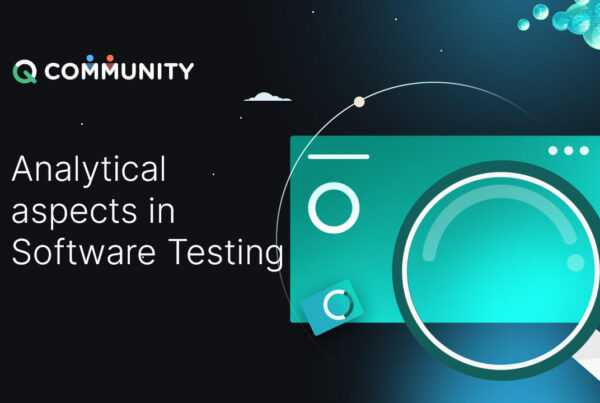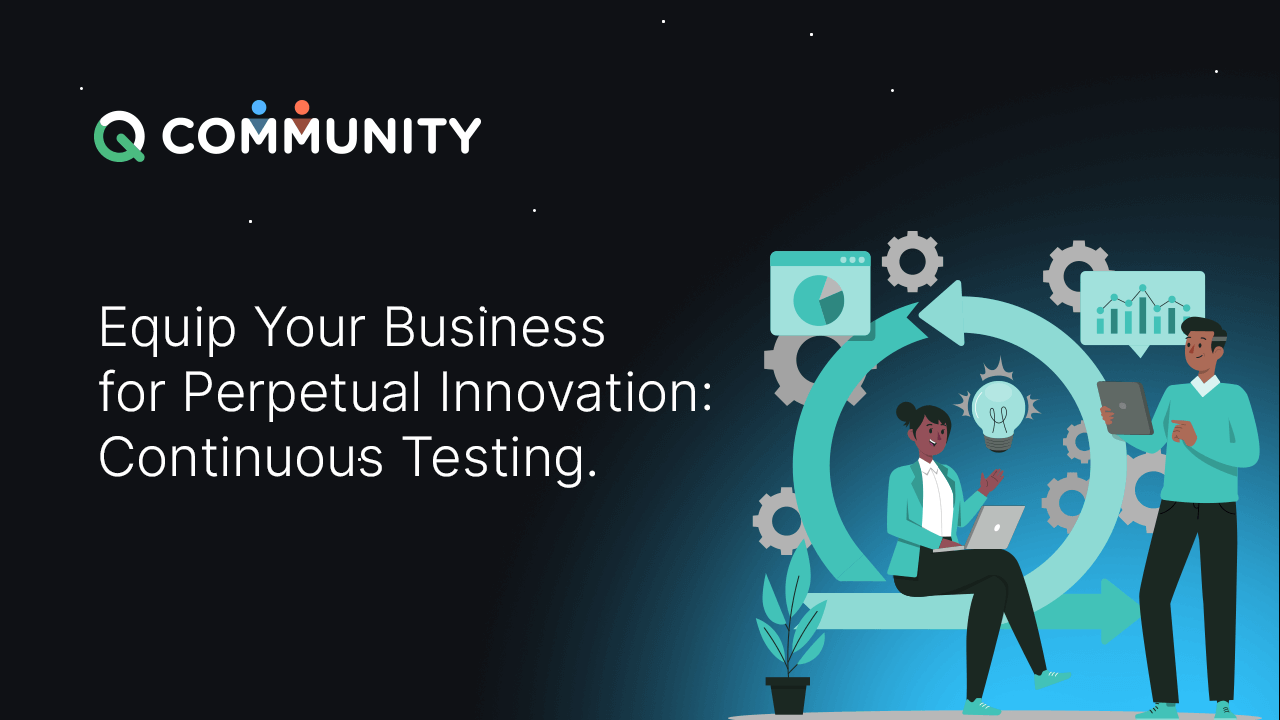Equip Your Business for Endless Innovation: Continuous Testing

In a galaxy far, far away, there is a company called SuperTechAI, known for developing innovative applications and services in the tech industry focusing on AI. Their latest project is a revolutionary app that promises to change how people interact with their phones ( It isn't another social network).
To ensure that their applications were the best they could be, SuperTechAI implemented a continuous testing approach. It meant they constantly tested and iterated on the app, made improvements, and fixed bugs. In addition, they used a combination of automated and functional testing methods to ensure that the app was working as intended and providing a seamless user experience.
One day, a team member came up with an idea for a new feature that uses AI to save cloud storage and compresses big files automatically in their phones (Utopic development). At first, some team members were skeptical - it seemed like a complicated feature to implement. But they decided to try it and began testing different software and algorithms.
After several rounds of Testing and tweaking, the team successfully implemented the voice command feature into the app. It was a massive hit with users, who loved being able to save storage in Android and IOs.
Thanks to their commitment to continuous Testing and innovation, SuperTechAI created a groundbreaking app that changed how people interacted with their phones and storage. Their success inspired other companies in the tech industry to adopt similar approaches to Testing and development, ultimately leading to even more innovation and progress. Does it sound familiar to your company?
Continuous Integration (CI) and Continuous Deployment (CD)
Continuous Integration refers to regularly integrating code changes into a shared repository. CI aims to identify and resolve integration issues early in the development cycle rather than at the end when addressing them can be more complicated and time-consuming. It is achieved through automated build processes, running automated tests, and performing other verification steps whenever code changes are made.
The primary objective of CI is to minimize the time between code changes and their Integration into the primary codebase, ensuring that the codebase remains stable and that changes don't break the build. Consequently, it's essential to have good test coverage to verify that the codebase remains reliable.
Continuous Deployment takes the automation process one step further by automatically deploying successful builds to production. A CD pipeline is deployed to production without manual intervention after a build has passed all tests and verification steps. This practice enables teams to release software updates quickly and consistently, reducing the time to market for new features and enhancements and consistently release software updates, which helps reduce the time to market for new features and improvements.
The future of testing is Codeless!
Join the universe of automation testing with our AI-powered platform!
Understanding Continuous Testing
Continuous Testing is a software testing approach emphasizing the need for Testing throughout the software development lifecycle. Continuous Testing aims to ensure that software is always ready for release by continuously testing and verifying its quality at every stage of development.
Continuous Testing involves using automated testing tools and frameworks to execute tests quickly and frequently, providing immediate feedback to the development team. This approach enables developers to detect and fix defects early in the development cycle, reducing the cost and time required to fix defects later on.

Continuous Testing is essential to Continuous Integration and Continuous Delivery (CI/CD) pipelines. It helps to ensure that every code change is tested thoroughly and automatically, providing confidence that the software functions correctly and meets the quality standards required for release.
CT involves a range of testing activities, including unit testing, functional Testing, integration testing, performance testing, and security testing. These tests are executed continuously, typically highly automated, to provide fast feedback to the development team.
Benefits of Continuous Testing for your Business
Now, we will discuss the benefits of Continuous Testing. With its ability to significantly enhance software quality and overall delivery processes, Continuous Testing has become an essential tool for organizations that want to stay ahead of the competition.
Here are some benefits of continuous Testing:
Improved quality
Continuous Testing helps identify defects early in the development cycle, improving software quality and reducing up to 50% of the cost of fixing defects.
Better collaboration
Continuous Testing promotes cooperation between development and testing teams, leading to better communication and more efficient problem-solving. We can have an improvement of up to 40% in team productivity.
Faster feedback
Continuous Testing provides more immediate feedback on software quality, allowing teams to identify and resolve issues quickly. We can improve by up to 60% in time-to-feedback.
Customer satisfaction
Delivering higher quality software more quickly and continuous Testing can increase customer satisfaction. It can result in an improvement of up to 80% in customer satisfaction.
These benefits are based on industry estimates and may vary depending on the specific organization and context. The impact of continuous Testing will depend on various factors, including the scope and complexity of the software being tested, the quality of the testing process, and the organization's culture.
Continuous Testing and AI
Artificial Intelligence (AI) can significantly improve the efficiency and effectiveness of Continuous Testing. AI can help automate and streamline many tasks involved in the testing process. Intelligent test automation uses AI to automate test case creation, execution, and analysis. AI algorithms can learn from previous test results and identify patterns to create new test cases automatically. This approach can save significant time and effort compared to manual Testing.
Test optimization involves using AI to identify which and when to run tests to maximize testing coverage while minimizing the time and resources required. This approach ensures that Testing is focused on the most critical areas of the application and reduces the risk of defects going undetected.
AI can also generate test data automatically, reducing the need for manual test data creation and improving the accuracy and diversity of test data. As a result, integrating AI into Continuous Testing can improve testing processes' speed, accuracy, and effectiveness, leading to higher-quality software and faster release cycles.
ACCELQ can help leverage true AI-Powered Codeless Test Automation to achieve Continuous Testing and help your business to achieve the innovation we discussed above.

Wrapping Up
Organizations can deliver software faster and with high quality by implementing Continuous Testing alongside Continuous Integration and Continuous Delivery. Continuous Testing enables ongoing Testing throughout the software development process, allowing for rapid detection and resolution of any issues or bugs.
Continuous Integration ensures regular Integration and Testing of code changes, while Continuous Delivery streamlines the software delivery process to production. Together, these three approaches result in faster, higher-quality releases, with prompt issue detection and secure software delivery.
Embracing these practices, organizations stay innovative and ahead of the curve, positively impacting their testing landscapes. The primary purpose of CT is to enable companies to deliver new functionality faster and achieve a perpetual innovation state.
Happy Bug Hunting!
Related Posts
 Analytical Aspects in Software Testing
Analytical Aspects in Software Testing
Analytical Aspects in Software Testing
 QCommunity Talks with Carlos Kidman-“How to prevent common failures in Test Automation”
QCommunity Talks with Carlos Kidman-“How to prevent common failures in Test Automation”




































